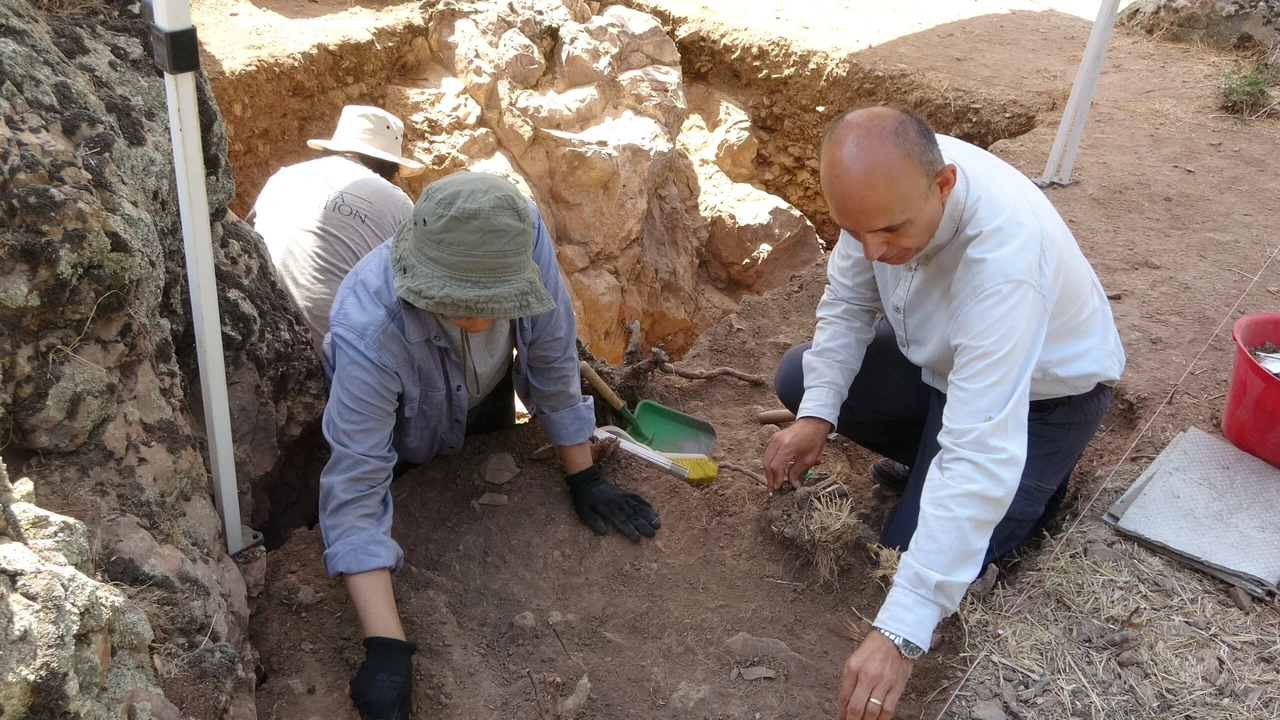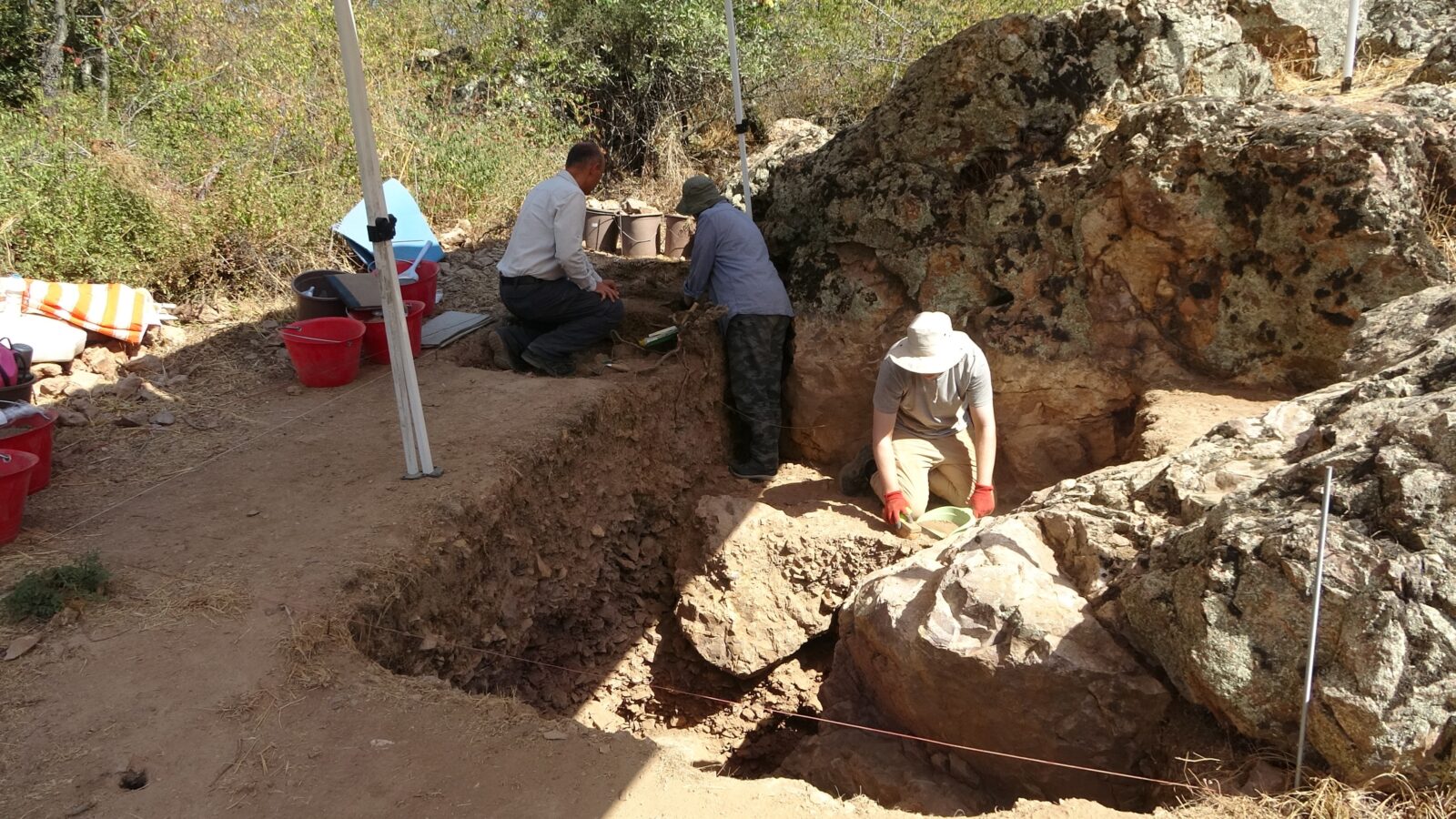86,000-year-old Inkaya Cave reveals 25,000 artifacts in Türkiye’s Canakkale
 During the 2024 excavations in Inkaya Cave within the borders of Bahadirli village in Can district of Canakkale, Türkiye, it was found that people lived in the 64,000-year-old workshop and used the area for 24,000 years, September 15, 2024 (IHA Photo)
During the 2024 excavations in Inkaya Cave within the borders of Bahadirli village in Can district of Canakkale, Türkiye, it was found that people lived in the 64,000-year-old workshop and used the area for 24,000 years, September 15, 2024 (IHA Photo)
Archaeologists have uncovered traces of human life dating back 86,000 years during this year’s excavation season at Inkaya Cave, located in Bahadirli village near Can in Türkiye’s Canakkale province.
Discovered in 2016 during a surface survey led by professor Ismail Ozer from Ankara University’s Department of Paleoanthropology, the cave has been the site of ongoing excavations.
The research team, working under the direction of professor Ozer, has unearthed 25,000 stone tools over the last eight years, shedding light on the Middle Paleolithic era.

8 years of discoveries at Inkaya Cave
Inkaya Cave has yielded an extraordinary collection of flint and basalt artifacts, including flakes, scrapers, blades, points and retouched tools.
Among the 25,000 artifacts found, cores and hammerstones have also been identified, further enhancing our understanding of the technological capabilities of early humans in the region.

Human skeletons could reveal new insights
The latest excavation efforts have reached layers dating back 86,000 years. Future excavations aim to uncover human skeletal remains, which will provide valuable insights into the lifestyle, behaviors, and dietary practices of Paleolithic humans.
These findings, combined with the rich assortment of stone tools, are expected to deepen our understanding of how ancient populations utilized the cave and its surrounding resources.
Researchers believe that the area’s abundant flint and nearby hot springs made it an attractive long-term habitation site for early humans, providing the necessary materials for tool-making and sustenance.
Inkaya Cave stands as a crucial archaeological site, offering a glimpse into the lives of early humans who inhabited the area 86,000 years ago.
With thousands of artifacts already discovered, the site is set to provide groundbreaking insights into human history as further excavations continue.



